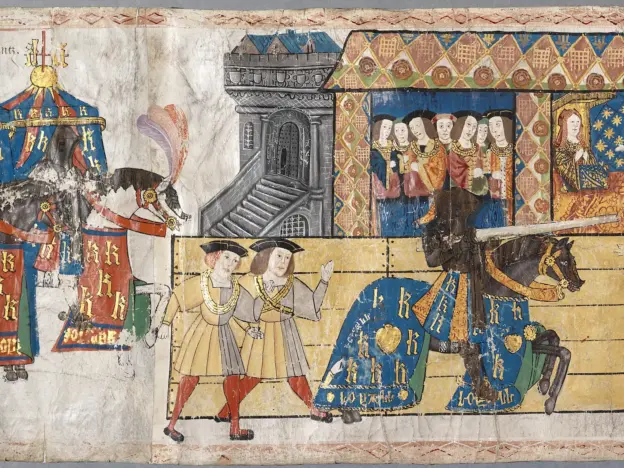Intro
Also called a Destrier (they come from Norman animals) the Great Horse is a war horse of the middle-ages and possibly father of both Shire and Percheron breeds. Prized by knights for their ability to carry a knight in full armor, while remaining agile enough for battle and jousting. They were never common animals.
Origins
First mentioned around 1066 and brought to the UK after the Norman Conquest. The Great Horse was never a breed, rather a type. Essentially the finest and strongest warhorses were considered Great. Often stallions raised from colts specifically for war, this was a battle horse. Reserved for the battlefield, they were not ridden for transport to be kept fresh for use.
In the early 14th century there were laws passed to encourage the breeding of bigger, stronger horse. People were forbidden from breeding horses under 15 hands and prohibiting export of horses.
By the end of the 16th century there was a web of transport across the country, connected by muddy, rutted paths. Strong animals were needed to haul supplies and people over rough terrain and heavy horses were in demand. This prompted imports of Flanders and Friesian horses (mostly black) which also had a refining influence over the Shire.
When roads got better and bigger animals were no longer required for heavy transport, many remained in the area for breeding. Sold to the Leicestershire, Staffordshire and Derbyshire where they were bred into extinction and developed into the Shire breed.
Just How Great Were They?
It was believed that this was a cold blooded draft type, however there is controversy over this theory (and research supports it). The Museum of London conducted some research into the matter using a variety of sources. Their finding suggested that war horses averaged 14 to 15 hands and differed from their riding counterparts by heavier distribution of muscle. While an analysis of equipment from Royal Armories shows that horse armor was worn by horses of 15 to 16 hands.
Features
Average height 15 -16 hands
Physique
Strong head with straight or slightly convex profile
Flat forehead
Arched Neck
Short Back
Powerful hindquarters
Muscular loin
Traditional Colors
Originally probably solid colors, with an emphasis on black after introduction of Dutch animals
Temperament
Spirited and energetic
High energy and strong
Use
War mount
